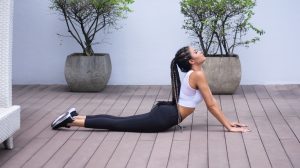 As we get older, our bodies naturally undergo changes—muscles lose elasticity, joints become stiffer, and balance may decline. These shifts can make simple daily activities more challenging, increasing the risk of falls, injury, and chronic stiffness. One powerful yet often overlooked way to combat these effects is regular stretching.
As we get older, our bodies naturally undergo changes—muscles lose elasticity, joints become stiffer, and balance may decline. These shifts can make simple daily activities more challenging, increasing the risk of falls, injury, and chronic stiffness. One powerful yet often overlooked way to combat these effects is regular stretching.
Why Stretching Matters More With Age
-
Maintains Flexibility
Flexibility tends to decrease with age due to reduced elasticity in muscles and connective tissues. Stretching counteracts this by keeping muscles pliable, allowing for greater range of motion. This means simple tasks like reaching overhead, bending down, or turning your head while driving become easier and more comfortable. -
Improves Posture
As muscle imbalances develop over time—like tight chest muscles pulling the shoulders forward—posture can suffer. Stretching lengthens shortened muscles and helps restore balance, reducing strain on joints and improving overall alignment. -
Supports Joint Health
Stiff joints are a common issue in older adults. Gentle, consistent stretching lubricates joints, improves circulation, and prevents them from becoming overly rigid. This is especially beneficial for individuals with arthritis. -
Reduces Risk of Injury
Stiffer muscles are more prone to strains and pulls. Stretching before and after light exercise helps prepare the muscles for movement and reduces the likelihood of injury. -
Boosts Circulation and Relaxation
Stretching encourages blood flow throughout the body, which aids recovery and may reduce muscle soreness. It also provides a calming, meditative effect and can help ease tension and stress.
Examples of Helpful Stretches for Aging Adults
-
Neck Stretch
Slowly tilt your head to one side, bringing your ear toward your shoulder. This helps maintain mobility in the neck and eases stiffness from daily activities like reading or using a phone. -
Chest Opener
Stand in a doorway with your arms bent and pressed against the frame. Gently step forward to stretch the chest muscles that often tighten with poor posture or prolonged sitting. -
Hamstring Stretch
Sit on the edge of a sturdy chair with one leg extended straight and heel on the floor. Lean forward slightly until you feel a stretch in the back of your thigh. This improves flexibility in the legs and makes walking or climbing stairs easier. -
Calf Stretch
Place your hands against a wall and step one foot back, keeping the heel on the ground. This stretch supports balance and mobility, especially helpful for preventing trips and falls. -
Torso Twist (Seated)
Sit in a chair with both feet flat. Gently twist your upper body to one side, holding for a few seconds before switching. This improves spine mobility and helps with daily rotational movements.
Tips for Safe Stretching as You Age
-
Warm up before stretching with light movement (like walking in place).
-
Stretch slowly and gently—avoid bouncing.
-
Breathe deeply and relax into each stretch.
-
Hold each stretch for 15–30 seconds.
-
Stop if you feel sharp pain (mild tension is normal, but pain is not).
-
Consistency matters more than intensity—stretching just a few minutes daily can make a big difference.
Final Thoughts
Stretching isn’t just for athletes or fitness enthusiasts—it’s a lifelong practice that becomes increasingly valuable with age. By dedicating even a small amount of time each day to stretching, you can protect mobility, reduce discomfort, and maintain the freedom to move with ease and confidence well into later life.